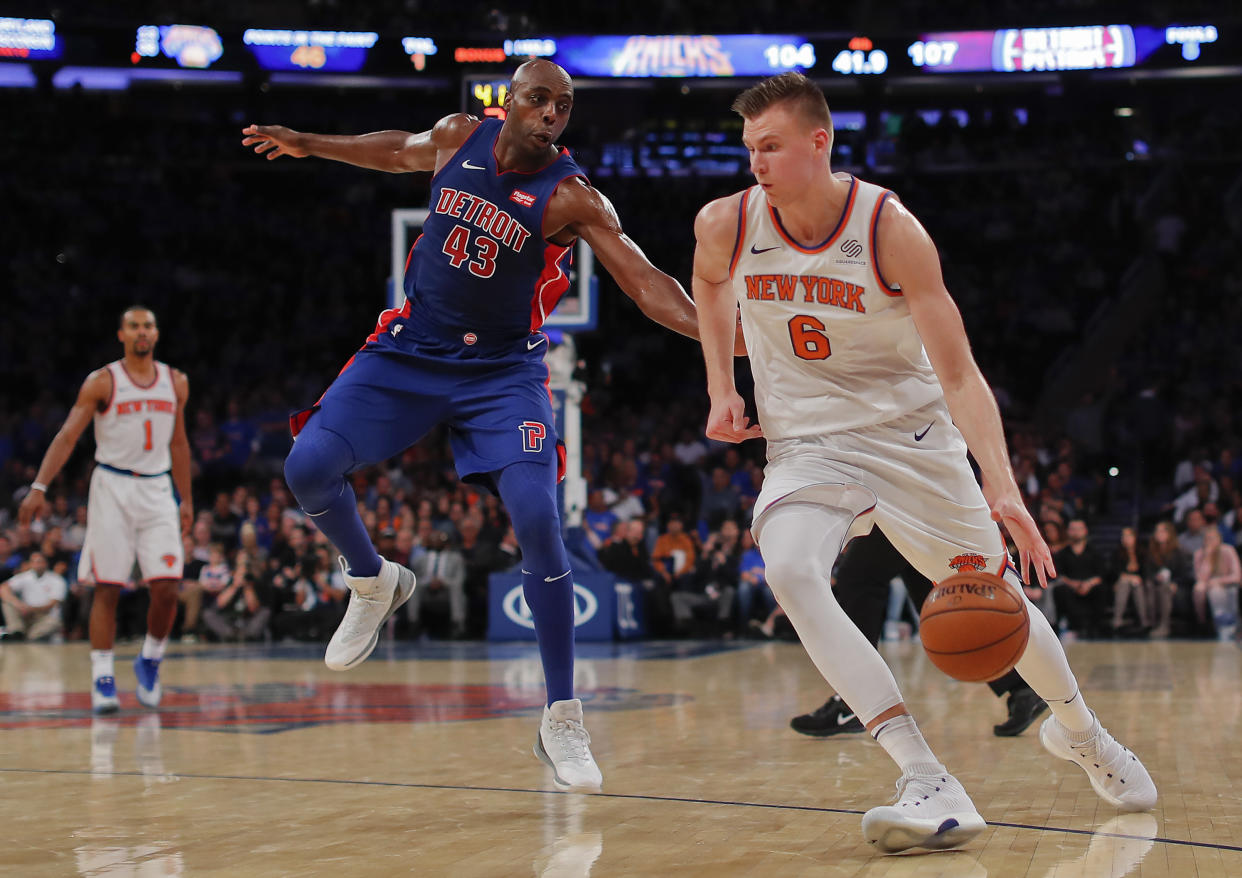Kristaps Porzingis credits Marcus Smart for making him better player

One week into his third NBA season, and his first without Carmelo Anthony, Kristaps Porzingis has emerged as a viable number one scoring option for the New York Knicks, averaging 32 points a game. However, his offensive progression in the low post has always lagged behind his perimeter scoring skills. He’s the tallest player in NBA history to record at least 150 career 3-point field goals made, but despite being 7-foot-3, the lanky 230-pounder has often pushed around in the paint.
As a rookie, Porzingis was overflowing with natural talent, but he was also a pale human string bean. Before his Tuesday night clash against the Boston Celtics, he told NBA.com that getting locked down by Boston Celtics point guard Marcus Smart two seasons ago helped make him a tougher defensive assignment:
The 7-foot-3, 20-year-old had racked up 20 points during the first half, and Celtics coach Brad Stevens was searching for any answer to slow him down.
After exhausting several options, Stevens called on Smart for the task. At the time, it seemed like a massive mismatch for Smart, considering he stood 11 inches shorter than the versatile, Latvian big man. Stevens later admitted the assignment was “kinda crazy,” but he also knew that Smart was the feistiest defender on the team and would be up for any challenge.
As it turns out, Smart was the perfect man for the job. The second-year Celtics guard stuck to Porzingis’ hips like glue and was very physical with his lower body. Porzingis had never dealt with that type of defensive counter before; as a result he was limited to six second-half points.
Smart is the inverse of Porzingis. For a guard, his perimeter offensive skills are pedestrian, but he is a defensive maestro who can defend all five positions. His strength and low center of gravity frustrated Porzingis throughout the night, and in a copycat league, teams stole that defensive blueprint.
“It was something I had never experienced before,” Porzingis recalled Tuesday morning following Knicks shootaround at TD Garden. “[Smart] was getting into my knees, playing hard defense and I wasn’t really ready for it. I think now I’m more prepared for it. I know what’s coming. I know every team is going to try to play physical defense against me, and I just have to make sure I’m ready for that contact.”
Porzingis made it a point to work on his post game over the last two summers so that he can impose himself physically on the boards, backing down opposing bigs in the post or when teams try to get clever by throwing a smaller, more brolic defender on him.
Porzingis is arguably the NBA’s most promising stretch four, but many scouts believe he’ll eventually wind up being converted into a center as small ball proliferates. First, Porzingis must continue bulk up the twigs connecting his hips and feet. If this summer’s viral video of Porzingis struggling to squat with light weights is an accurate depiction of where he’s at physically, we may be a few summers in the weight room from witnessing Porzingis’ final form.
Porzingis will never be strong as an ox, but as he expressed to NorthJersey.com, using guards to defend him is a strategy that’s losing its effectiveness.
“I feel more comfortable now playing against the guards,” he said. “Last game they put Stanley Johnson on me and I was able to get those couple and-ones early on. I’m feeling more comfortable. I take my time. I take my time when I have a mismatch like that and try to use my length, shoot over guys and get fouled so they’re forced to put a bigger guy on me.”



